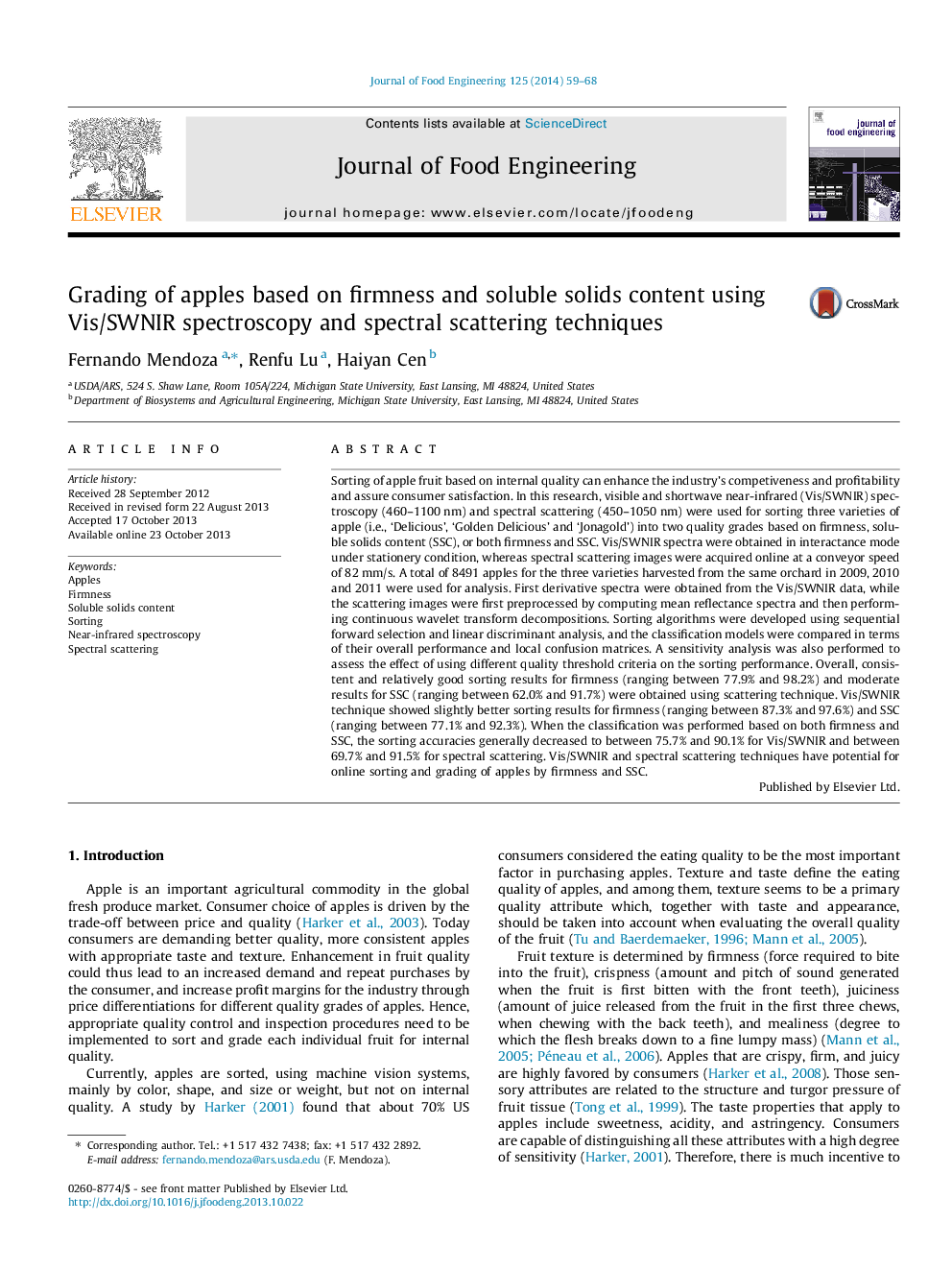| Article ID | Journal | Published Year | Pages | File Type |
|---|---|---|---|---|
| 223252 | Journal of Food Engineering | 2014 | 10 Pages |
•Vis/SWNIR spectroscopy and spectral scattering were used for sorting three apple varieties into two quality grades.•A sensitivity analysis was performed using different quality threshold criteria for apple sorting.•Good sorting results for firmness and moderate for SSC were obtained using an online scattering technique.•Better sorting results for firmness and SSC were obtained using a stationary Vis/SWNIR technique.•When the classification involves firmness and SSC quality attributes, the sorting error increases.
Sorting of apple fruit based on internal quality can enhance the industry’s competiveness and profitability and assure consumer satisfaction. In this research, visible and shortwave near-infrared (Vis/SWNIR) spectroscopy (460–1100 nm) and spectral scattering (450–1050 nm) were used for sorting three varieties of apple (i.e., ‘Delicious’, ‘Golden Delicious’ and ‘Jonagold’) into two quality grades based on firmness, soluble solids content (SSC), or both firmness and SSC. Vis/SWNIR spectra were obtained in interactance mode under stationery condition, whereas spectral scattering images were acquired online at a conveyor speed of 82 mm/s. A total of 8491 apples for the three varieties harvested from the same orchard in 2009, 2010 and 2011 were used for analysis. First derivative spectra were obtained from the Vis/SWNIR data, while the scattering images were first preprocessed by computing mean reflectance spectra and then performing continuous wavelet transform decompositions. Sorting algorithms were developed using sequential forward selection and linear discriminant analysis, and the classification models were compared in terms of their overall performance and local confusion matrices. A sensitivity analysis was also performed to assess the effect of using different quality threshold criteria on the sorting performance. Overall, consistent and relatively good sorting results for firmness (ranging between 77.9% and 98.2%) and moderate results for SSC (ranging between 62.0% and 91.7%) were obtained using scattering technique. Vis/SWNIR technique showed slightly better sorting results for firmness (ranging between 87.3% and 97.6%) and SSC (ranging between 77.1% and 92.3%). When the classification was performed based on both firmness and SSC, the sorting accuracies generally decreased to between 75.7% and 90.1% for Vis/SWNIR and between 69.7% and 91.5% for spectral scattering. Vis/SWNIR and spectral scattering techniques have potential for online sorting and grading of apples by firmness and SSC.
